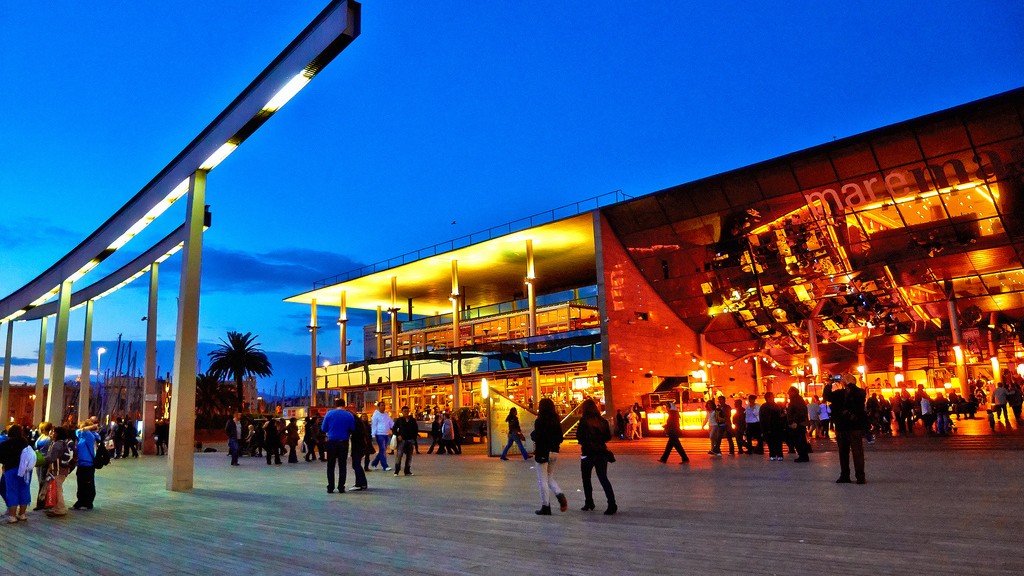Gardeners making their rounds through Barcelona’s Parc del Centre del Poblenou these days are as likely to carry tablets as trowels. The city recently moved 178 of its irrigation points to an Internet-controlled system. While it is handy to manage watering at the keyboard instead of turning a knob on a pipe, much of the advantage is in the data that the new system sends back to a central software system the city has built.
The irrigation system is one of about two dozen smart systems that the city is building. Data from their sensors flows to three open software platforms, where it is collected and analyzed for insight into how the city could be run more efficiently. In a remade industrial neighborhood called 22@Barcelona, which was financed with $230 million of taxpayer funds, the data is put to further use creating apps and other programs to be tested in a sort of urban laboratory for smart city technology.
Barcelona is often cited as the quintessential smart city, but like any city betting on technology, it must be careful to implement genuinely beneficial projects and avoid foisting unnecessary digital investments on its citizens. “One of the dangers [of the fashion for smart city development is] a tech push and not a pull,” says engineer Ramón Martín de Pozuelo, who leads the postgraduate smart cities program at Ramon Llull La Salle University in Barcelona. “The tech should come from needs.”
In the case of Barcelona’s irrigation system, sensors in the ground offer live data on humidity, temperature, wind velocity, sunlight, and atmospheric pressure. That means, for example, that gardeners can decide what the plants need based on that data and adapt their schedule to avoid overwatering. Curious citizens of the city, or anywhere in the world, can check the data on a map online. The city invested around $382,000 in building the first phase of the system, which began operations in March. As of this summer, the city council estimated that the system would cut water usage by about one-quarter for a saving of $555,000 a year, a smart investment for a city that not too long ago had to import drinking water by ship.
The software platform is a joint venture between the city of Barcelona and private companies. It also collects and displays data from other kinds of smart meters. The city chose to make the platform open so makers of future sensor networks or mapping or analysis software could use that data for their own purposes. The platform also allows city departments to share information and avoid repeating each other’s work, explains city council spokesperson Laura Lahoz González. Today, nine other cities use it as well.
Would another platform, executed differently, have promoted more data sharing and more business uses? To try to answer that question, Barcelona is coöperating with an international organization called CityProtocol, which aims to promote common data-sharing standards for cities. That could allow data-sharing platforms from different cities to plug into the same data streams, enabling comparison and competition.
The infrastructure Barcelona is building, from publishing its data to offering physical space in 22@Barcelona, has fostered successful private enterprises. Worldsensing is one example: it piloted a parking system called Fastprk by installing 100 parking sensors in the 22@Barcelona district. The company’s product tracks parking and enables drivers to find available spots and pay for them. Barcelona provided Fastprk with office space and permits to test its idea on the city’s streets.
In the end, Barcelona didn’t install Fastprk across the city, opting instead for L’apparkB, a mobile smart parking system developed by the city’s own software team. It’s now issuing 4,000 parking permits a day after one year of operation. But Worldsensing has found success elsewhere, installing a Fastprk system with 10,000 sensors in Moscow. This is one example of how the urban laboratory is beginning to create what Martín calls “a horizontal market,” in which tools developed in one city are shared globally.
Outsiders have showered Barcelona with smart city awards, including the 2014 City Climate Leadership award for intelligent city infrastructure, the European Capital of Innovation prize from the European Commission last March, and the 2014 Bloomberg Mayor’s Challenge. Businesses, too, are betting that Barcelona’s plans will benefit them. Earlier this year, Cisco, Schneider, and Philips announced plans to occupy part of 22@Barcelona and begin installing sensors, wireless networks, and smart streetlights.
